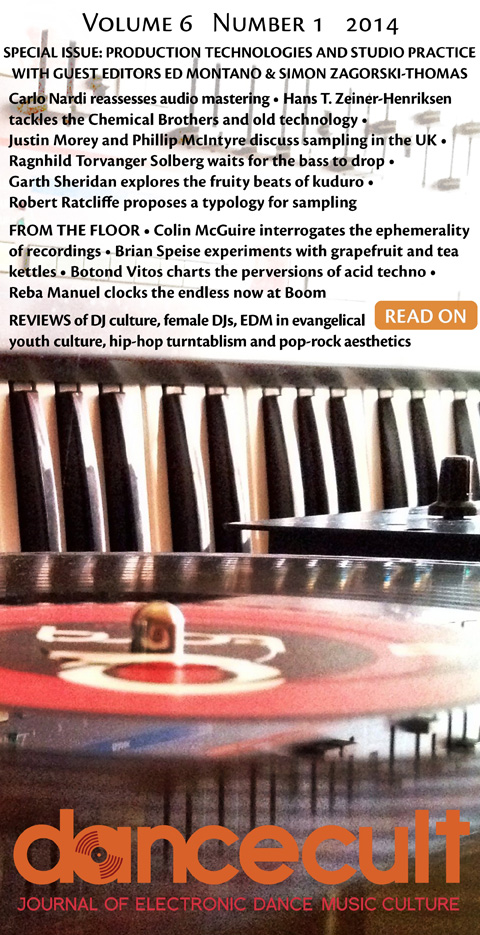Old Instruments, New Agendas: The Chemical Brothers and the ARP 2600
Keywords:
production, subcultural capital, sociotechnical theoryAbstract
A preference for old vintage music equipment is widespread in electronic dance music. My point of departure for a discussion of this phenomenon is an interview from Keyboard magazine in which the members of the production duo the Chemical Brothers proclaim their fascination with an old analogue synthesizer. Two diverse theoretical approaches will inform and nuance my narrative here. Wiebe E. Bijker’s sociotechnical approach to the development of technology will highlight stages and processes in the transition from analogue to digital technology. In addition, Sarah Thornton’s concept of subcultural capital will direct attention to the old instrument as a prestige item that serves to maintain power structures within the electronic dance music culture.Downloads
Published
02-Jun-2014
Issue
Section
Feature Articles
License
Authors who publish with this journal agree to the following terms:- Authors retain copyright and grant the journal right of first publication with the work simultaneously licensed under a Creative Commons Attribution-Noncommercial-Share Alike License that allows others to share the work with an acknowledgement of the work's authorship and initial publication in this journal.
- Authors are able to enter into separate, additional contractual arrangements for the non-exclusive distribution of the journal's published version of the work (e.g. post it to an institutional repository or publish it in a book), with an acknowledgement of its initial publication in this journal. Such derivate works or subsequent publications must happen no less than one calendar year after the initial publication date in Dancecult.
- Authors are permitted and encouraged to post their work online (e.g. in institutional repositories or on their website) prior to and during the submission process, as it can lead to productive exchanges, as well as earlier and greater citation of published work (See The Effect of Open Access).






